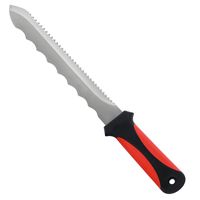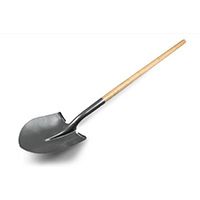Transforming high-traffic areas of your landscape can feel tricky, but with the right strategies, you can create an attractive space you and your neighbors can enjoy. Whether it’s a corner lot, a busy pathway, or a spot where pets like to roam, careful planning and plant selection make a big difference. Let’s dive into some techniques for landscaping these areas, using insights from This Old House landscape contractor, Jenn Nawada. She helped a homeowner reshape their corner lot into a resilient, eye-catching landscape that holds up under heavy use in the video above. You can do the same with your space by following these tips.
Understanding High-Traffic Landscaping Challenges
Landscapes with frequent foot or pet traffic often face the following challenges:
- Soil compaction
- Plant damage
- Erosion
- Difficulty maintaining grass or ground covers
To keep your landscape looking good, you’ll want to pick durable materials and tough plants that handle the wear and tear while still looking great.
Tools and Materials for High-Traffic Landscaping
Gather the following items before moving forward with this project:
- Boxwood plant
- Butterfly bush
- Geraniums
- Hens and chicks plant
- Mulch
- Panicle hydrangeas
- Shasta daisies
- Shovel
- Small boulders
- Sod cutter
- Spray paint
- Starter fertilizer
- Stepping stones
- Thyme
Planning Your High-Traffic Landscape
Before jumping into your project, it’s important to have a plan. Start with these steps.
Assess the Area
Start by evaluating the specific challenges of your outdoor area, and think about these factors:
- The volume and type of traffic (pedestrian, pet, vehicular)
- Existing soil conditions
- Sunlight exposure
- Drainage patterns
Understanding these details will guide your choices for materials and plants.
Define the Space
Once you’ve assessed the area, it’s time to define the space. Mark out the location of new garden beds or pathways, determining the size and shape of the hardscaped regions. You should also plan for transitions between different zones in your landscape.
Nawada highlights the importance of clear visualization and uses tools like spray paint to mark bed lines.
Choose Appropriate Materials
In high-traffic areas, materials need to last. These are some good options:
- Stepping stones or pavers for pathways
- Mulch for garden beds
- Decorative gravel or crushed stone for accents
- Boulders or large rocks for visual interest and traffic control
In her project, Nawada chose New England fieldstone steppers and small boulders for a natural, durable look.
Selecting Plants for High-Traffic Areas
Choosing tough, low-maintenance plants is key for these spaces. Keep these factors in mind.
Durability
Look for plants that are known for their toughness and ability to bounce back from minor damage. The following are some excellent choices:
- Panicle hydrangea
- Butterfly bush
- Boxwood
- Thyme
- Hens and chicks
These plants were selected by Nawada and the homeowner due to their resilience and ability to thrive in challenging conditions. Their robust nature reduces the risk of frequent replacements and ensures sustained beautification.
Height and Visibility
When landscaping near streets or intersections, think about plant height to maintain visibility for drivers and pedestrians. Tall plants can obstruct views, posing safety hazards.
Seasonal Interest
Choose a mix of plants that provide visual interest throughout the year. This might include evergreen shrubs for year-round structure, flowering perennials for seasonal color, and ornamental grasses for texture and movement.
Low Maintenance
In high-traffic areas, low-maintenance plants are ideal. Look for species that are drought-tolerant, require minimal pruning, and resist pests and diseases. Low-maintenance plants save time and resources in the long run, allowing you to enjoy the landscape more and work less.
Installing Your High-Traffic Landscape
With your plan and materials ready, it’s time to install. Follow these steps:
- Remove existing grass or vegetation: A sod cutter or manual tools can help clear the area, preparing it for new features.
- Prepare the soil: Rake and till to create a smooth surface that accommodates new growth.
- Install hardscape elements: Place stepping stones and boulders, ensuring they are secure and level to prevent movement or tipping.
- Plant your selected vegetation: Follow proper planting techniques and adjust root balls and planting depth for each species.
- Apply mulch: Cover garden beds with mulch to retain moisture and suppress weeds.
- Water thoroughly: Establish new plants with a deep, consistent watering routine.
Understanding Utility Layout for a High Traffic Landscape
Awareness of your property’s utility layout can prevent costly mistakes. Identify where gas, water, and electric lines are located before starting any digging or heavy landscaping projects. Calling a professional to mark these areas can protect you from hazards and prevent abrupt service interruptions.
Maintaining Your High-Traffic Landscape
Once your high-traffic landscape is installed, maintenance is key to its longevity and appearance. A well-maintained landscape can endure traffic stresses more effectively and continue to present a welcoming face to visitors. Here are some tips:
- Water regularly—especially during the establishment period for new plants.
- Apply fertilizer as needed to support plant health.
- Prune and trim plants to maintain their shape and encourage healthy growth.
- Replenish mulch annually to maintain its benefits.
- Monitor for signs of wear and tear, addressing issues promptly.
Expert assistance with this segment was provided by Forever Green Landscaping, Inc.


